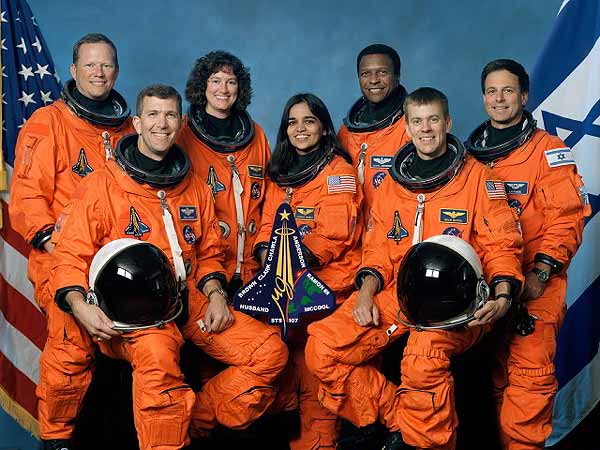Mission Columbia: Make a Buck, Make a Buck — Even in Space It's the Same

(Editor's note: This story was originally published on January 15, 2003.)
CAPE CANAVERAL, Fla. — Finding profits in space remains as elusive as inventing a cure for the common cold, but if ever those two miracles do occur it's possible that SpaceHab will be where it happens.
Since 1984, SpaceHab, Inc., has been pioneering the frontier of commerce in orbit, looking for ways to make a buck while floating in the weightless space environment.
The latest addition to their centerpiece product — a pressurized module that fits in the shuttle's cargo bay — is ready for launch from Kennedy Space Center on Thursday.
Known as the Research Double Module, this SpaceHab compartment is twice the size of the company's smaller laboratory and will be home to most of the 86 payloads and 79 science experiments planned during shuttle Columbia's marathon 16-day research mission.
"It's a module that is much more specifically designed to be an on-orbit laboratory in the back of the orbiter payload bay," said Rick Husband, commander of Columbia's seven-member crew that includes Israel's first astronaut, Ilan Ramon.
Liftoff of NASA's 113th space shuttle mission — designated STS-107 by the space agency — remains set for between 10 a.m. and 2 p.m. EST (1500 and 1900 GMT) Thursday. An exact launch time will be announced Wednesday.
Breaking space news, the latest updates on rocket launches, skywatching events and more!
Technically everything looked good with the shuttle as of Tuesday night and Air Force meteorologists continue to predict a 95 percent chance of acceptable conditions during what will be a 2.5-hour launch window.
Launch pad workers spent most of the day Tuesday filling the SpaceHab module and Columbia's middeck with many of the time-critical experiments that couldn't be loaded until the last minute.
Using equipment borrowed from the world of mountain climbing and hang gliding, workers carefully lowered a single colleague carrying equipment down into the SpaceHab work volume and then fished the person out of there, repeating the process again and again until the task was complete.
The SpaceHab module tucked inside Columbia is approximately 20 feet (six meters) long, 14 feet (4.2 meters) wide and 11 feet (3.4 meters) high. It can hold up to 61 experiment lockers plus six so-called double racks — or International Space Station-sized payload racks.
The total weight of equipment and experiments the module can carry is up to 9,000 pounds (4,082 kilograms), but for this mission the module will hold about 7,500 pounds (3,401 kilograms).
"It's roomy," said Columbia pilot William McCool. "It gives us, the operators, space to operate, to run the payloads. So that's it in a nutshell. Room, power, cooling. Everything you need to make the experiments work."
SpaceHab modules and experiment carriers have flown on 17 shuttle missions, including five research flights and 12 space station resupply missions — seven to the Russian space station Mir and five to the International Space Station.
For this STS-107 mission NASA is leasing the double module from SpaceHab.
According to contract numbers released by SpaceHab, NASA is paying $47.65 million for the module and support services. That number includes $12.75 million that was added to the contract as the result of a six-month delay to this mission.
As part of the deal, SpaceHab was allowed to sell up to 20 percent of the payload capability to commercial customers for up to $22 million in revenue. The company wound up selling 12 percent of the payload capability to a variety of customers that included NASA, the Air Force and many university and international educational organizations.
"We're just happy to have a facility as advanced as the research double module to do these kinds of investigations," said John Charles, a NASA mission scientist. "This is the first flight and we're sort of hoping that it's not the last flight of this particular module."
Follow SPACE.com on Twitter @Spacedotcom. We're also on Facebook & Google+.
Jim Banke is a veteran communicator whose work spans more than 25 years as an aerospace journalist, writer, producer, consultant, analyst and project manager. His space writing career began in 1984 as a student journalist, writing for the student newspaper at Embry Riddle Aeronautical University, The Avion. His written work can be found at Florida Today and Space.com. He has also hosted live launch commentary for a local Space Coast radio station, WMMB-AM, and discussed current events in space on his one-hour radio program "Space Talk with Jim Banke" from 2009-2013.
